Most of what we know about the Essenes comes from the literature found at Qumran, known popularly as The Dead Sea Scrolls, and from the writings of the Jewish historian, Josephus, a Roman historian, Philo, and a few other Roman and Greek writers. The Essenes, interestingly, are not mentioned in the New Testament, or in rabbinic literature. More on this later.
The Jewish historian, Josephus, mentions three “Philosophical Schools” all of which played an influential role in Judea a little before and during the time of Christ and the early Christian church. They were the Pharisees, the Sadducees, and the Essenes. Josephus records that the Essenes existed in large numbers, and thousands of them lived throughout Roman Judaea, but they were less numerous than the Pharisees and the Sadducees. They congregated in communal life, did not seek wealth, practiced daily bathing, and asceticism. (It appears that some of their priestly class practiced celibacy).

One possible explanation of why the Essenes are not mentioned in Rabbinic or Jewish literature is that the Essenes were the “separatists” of their day and did not participate in the politics of the Temple. (This also means that they would not have had as many dealings with the Romans, unlike the Pharisees and Sadducees.) This was due in part because during the Maccabean revolt, the Maccabees placed one of their relatives in the High Priest’s office, in violation of Levitical law, which specifically states that High Priests were to be taken from the line of Aaron only. Also, at one point, these usurper High Priests held the office of the ruler of Judah and the High Priesthood simultaneously, which also was forbidden in Levitical law. Because of these violations, the Essenes refused to participate in the Temple rituals or sacrifices. It is clear that they rejected the Jerusalem Temple or at least its priesthood.
The Qumran Scrolls show us that the Essenes separated themselves from Jewish political and ritual society, and the temple at Jerusalem because the usurper priests were following the wrong calendar, the wrong purity rules, and officiating improperly before the Lord. They, therefore, practiced ritual purity in their own community and waited for time when the true priesthood would be re-established in Jerusalem. Their communities were surrogate temples for the Qumran separatists.
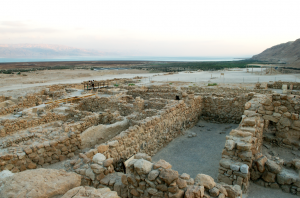 The Qumran community expected to be restored to the temple leadership, and so they maintained rigorous ritual purity beyond that of the Pharisees. But, the religious practices of the Qumran community had more in common with the Sadducees than the Pharisees, based on both their documents and other historical sources (especially the Halakhic letter, which discusses differences between the Qumran community and the Jewish temple). But, unlike the portrayal of the Sadducees by Josephus, the Qumran community accepted the whole Jewish canon of Scripture, with a possible exception in Esther (Esther was the only book of Scripture not found at Qumran).
The Qumran community expected to be restored to the temple leadership, and so they maintained rigorous ritual purity beyond that of the Pharisees. But, the religious practices of the Qumran community had more in common with the Sadducees than the Pharisees, based on both their documents and other historical sources (especially the Halakhic letter, which discusses differences between the Qumran community and the Jewish temple). But, unlike the portrayal of the Sadducees by Josephus, the Qumran community accepted the whole Jewish canon of Scripture, with a possible exception in Esther (Esther was the only book of Scripture not found at Qumran).
A Community of Two Parts
The Dead Sea Scrolls describe a community in two-parts–devout scholarly communities, possibly celibate, bound to each other in strict practice, and spiritual pursual–similar to a monastery, and then the broader Essene community in Judea made up of individuals, families, households, and communities, that were in the public sphere of Israel.
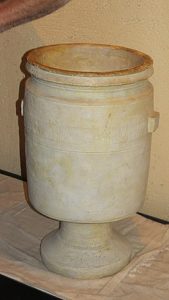 Qumran, where The Dead Sea Scrolls were found, is generally considered to be a sectarian Essene community, known to historians and scholars as the Qumran Sectarians (sectarian simply means separatist). This fact has created some circular arguments concerning the beliefs at Qumran, as their own literature, The Dead Sea Scrolls, is used in describing them. However, there is good evidence, even if somewhat circumstantial, that the Qumran Sectarians were, at least in part, Essene, probably the priestly class of Essenes that practiced celibacy. When the first scholars, who were Christians, worked on the Dead Sea Scrolls, they characterized the community as similar to a monastic community. Later Jewish archaeologists largely agreed with this characterization. You may think of them as a community of celibate scholarly priests, devoted to the study and preservation of scripture, and pursuing the same spiritual practices, while living in community.
Qumran, where The Dead Sea Scrolls were found, is generally considered to be a sectarian Essene community, known to historians and scholars as the Qumran Sectarians (sectarian simply means separatist). This fact has created some circular arguments concerning the beliefs at Qumran, as their own literature, The Dead Sea Scrolls, is used in describing them. However, there is good evidence, even if somewhat circumstantial, that the Qumran Sectarians were, at least in part, Essene, probably the priestly class of Essenes that practiced celibacy. When the first scholars, who were Christians, worked on the Dead Sea Scrolls, they characterized the community as similar to a monastic community. Later Jewish archaeologists largely agreed with this characterization. You may think of them as a community of celibate scholarly priests, devoted to the study and preservation of scripture, and pursuing the same spiritual practices, while living in community.
The Qumran literature (The Dead Sea Scrolls) includes: The Damascus Document, (Zadokite fragments), The Rule of the Congregation, the Temple Scroll, and 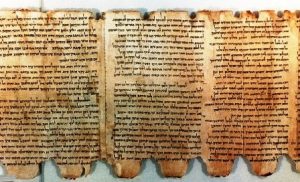 The Community Rule. The first three (The Damascus Document, The Rule of the Congregation, and The Temple Scroll) have life in the wider Judean community in mind—it has in view Essenes in cities and towns throughout Israel, not just the scholarly community at Qumran. The fourth document, The Community Rule is the most important document for the Qumran Sectarian practice, specifically for communities like the one at Qumran.
The Community Rule. The first three (The Damascus Document, The Rule of the Congregation, and The Temple Scroll) have life in the wider Judean community in mind—it has in view Essenes in cities and towns throughout Israel, not just the scholarly community at Qumran. The fourth document, The Community Rule is the most important document for the Qumran Sectarian practice, specifically for communities like the one at Qumran.
Some have argued that since the Qumran community was celibate that they could not be Essenes. However, this is not an accurate analysis because the Qumran sectarians had a positive view of sexuality. But, perhaps that aspect of life had to be foregone for them, as the priestly class, due to a concern for ritual purity that seems to dominate the Qumran literature. The view that the Qumran Sectarians could not be Essene comes from equating the Hellenistic descriptions of the broader community of Essene practices in Judea, with the specific practices of the priestly/scholarly community at Qumran.
Josephus describes the Essenes
- They ascribe every happening to God
- They believe in the immortality of the soul
- They followed an ascetic lifestyle, avoided pleasure and gave themselves to prayer
- They avoid violence and have all things in common
- Some Essenes avoid marriage, whereas another group sees marriage and procreation too central to human life to avoid it
- Certain Essenes can predict the future and interpret dreams
- Concerning sacrifices, Josephus mentions that although they send offerings to the temple, they have their own superior sacrifices
Philo describes the Essenes
- Much admired due to their holy lives
- They live peaceably with one another
- They hold to the truth
- They do not sacrifice, but through study keep their minds pure and holy.
Shared practices between the Essenes, John the Baptist, Christ and the Early Christians
We have no written sources that tell us directly how broad the Essenes’ influence on the larger Judean culture of their day was. But, as Stephen J. Pfann said, “we can establish links between them in thought, practice, geography, and era.”
One of the most significant similarities between the Essenes, John the Baptist, and the early Christians was in their practice of baptism. The Essenes practiced baptism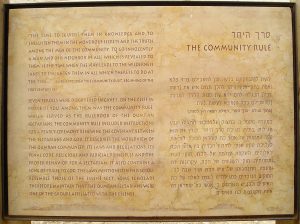 as did other sects of Judaism, but with two differences: The Essenes said that acts of worship and ritual, including baptism, must be carried out “by those whose hearts have been circumcised and whose spirits have been endowed with the attributes of the Holy Spirit” (1QS III 7–10). Their emphasis was on the heart of the believer which is echoed by both John the Baptist (“And they were baptized by him in the river Jordan, confessing their sins” Matthew 3:6; Mark 1:5b) and the early Christians (“You must confess with your lips and believe in your heart” Romans 10:9). The Essenes taught that without the right heart condition ritual and immersion was ineffective. Right heart condition was evidenced by “turning from evil and disobedience to the road of obedience to God’s commandments, which included proper conduct toward your neighbor” ((1QS I 9–10; IV 2–6). Secondly, baptism was practiced as the initiation ceremony into the Essene community, this is also the pattern for new believers in both the Gospels and Acts of the Apostles. It was a ritual that was done to signify the initiation of a covenant relationship.
as did other sects of Judaism, but with two differences: The Essenes said that acts of worship and ritual, including baptism, must be carried out “by those whose hearts have been circumcised and whose spirits have been endowed with the attributes of the Holy Spirit” (1QS III 7–10). Their emphasis was on the heart of the believer which is echoed by both John the Baptist (“And they were baptized by him in the river Jordan, confessing their sins” Matthew 3:6; Mark 1:5b) and the early Christians (“You must confess with your lips and believe in your heart” Romans 10:9). The Essenes taught that without the right heart condition ritual and immersion was ineffective. Right heart condition was evidenced by “turning from evil and disobedience to the road of obedience to God’s commandments, which included proper conduct toward your neighbor” ((1QS I 9–10; IV 2–6). Secondly, baptism was practiced as the initiation ceremony into the Essene community, this is also the pattern for new believers in both the Gospels and Acts of the Apostles. It was a ritual that was done to signify the initiation of a covenant relationship.
Shared beliefs between the Essenes and early Christians
- The Essenes and the early Christian community stood in opposition to the ruling religious parties of their day. Both called them out as corrupt.
- Even though the Essenes are not mentioned in the Gospels, it also signifies that they were not a part of the betrayal, trial, and crucifixion of Jesus. The silences of scripture are not accidental either. It is highly possible that there were Essenes among Jesus’ disciples.
- Both the Essenes, Jesus, and the early Christians taught that ancestry from Abraham was not evidence of justification or that you were a member of God’s covenant community.
- The New Testament uses similar ideas and words that are found in the Essene teachings and literature. In particular, the Johannine literature (the Gospel of John, and the Epistles of John). The contending of darkness and light, the spirits of truth and error, the sons of darkness and the sons of light, etc., are both found in The New Testament, evidence that these were well-known concepts to the disciples of Christ as they were to the Essenes.
 The Essenes, as a Jewish religious sect, disappeared from history around AD 70, after the destruction of Jerusalem. There were many who believed in Israel after the resurrection of Christ, and it would not be surprising that many of those were of the Essene sect. The devotion to scripture, accountability to one another, and pursual of the same spiritual goals are something that you see mirrored throughout covenant Christian communities in history. Not because the Essenes were so extraordinary (they were in many ways) but because it was built on love of God, His scripture, and love toward one another.
The Essenes, as a Jewish religious sect, disappeared from history around AD 70, after the destruction of Jerusalem. There were many who believed in Israel after the resurrection of Christ, and it would not be surprising that many of those were of the Essene sect. The devotion to scripture, accountability to one another, and pursual of the same spiritual goals are something that you see mirrored throughout covenant Christian communities in history. Not because the Essenes were so extraordinary (they were in many ways) but because it was built on love of God, His scripture, and love toward one another.
Again, it must be noted that we do not have literature from the New Testament era that confirms the influence between the Essenes and the early Christians. What we do know though, is that they were in the same geography, shared many of the same truths, they read the same Scripture, they shared similar practices, they lived in the same time period. We look forward to more light being shed on this in the future as researchers and scholars dig deeper.
Joel Hamme is chair of the biblical studies department at SUM Bible College and Theological Seminary, El Dorado Hills, CA, and adjunct instructor of biblical studies at William Carey International University, Pasadena, CA. He received his PhD in Old Testament Language and Exegesis from Fuller Theological Seminary in 2014. He resides in Hays, KS.

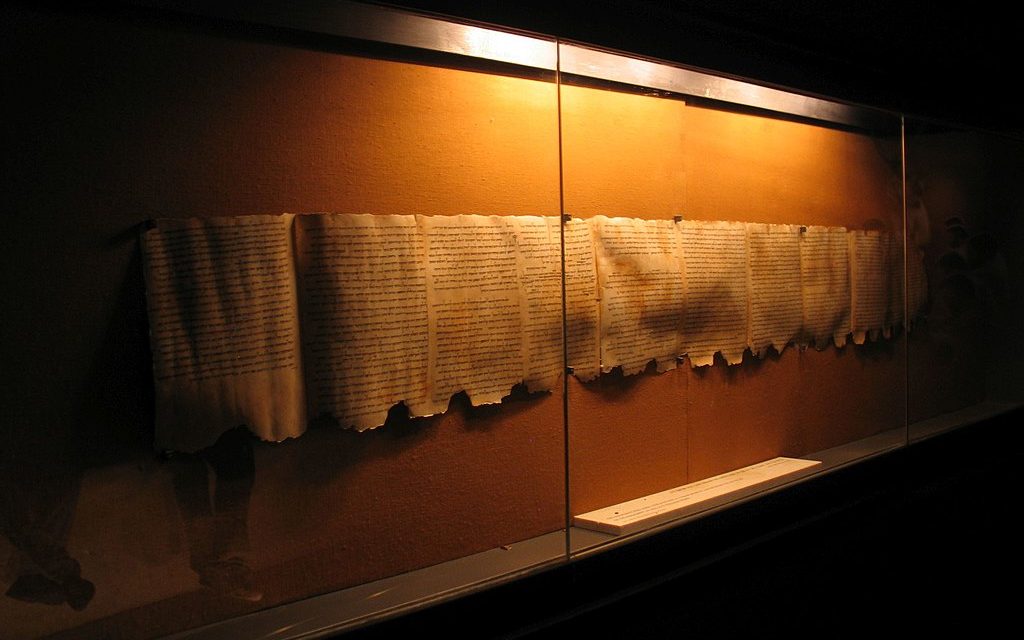

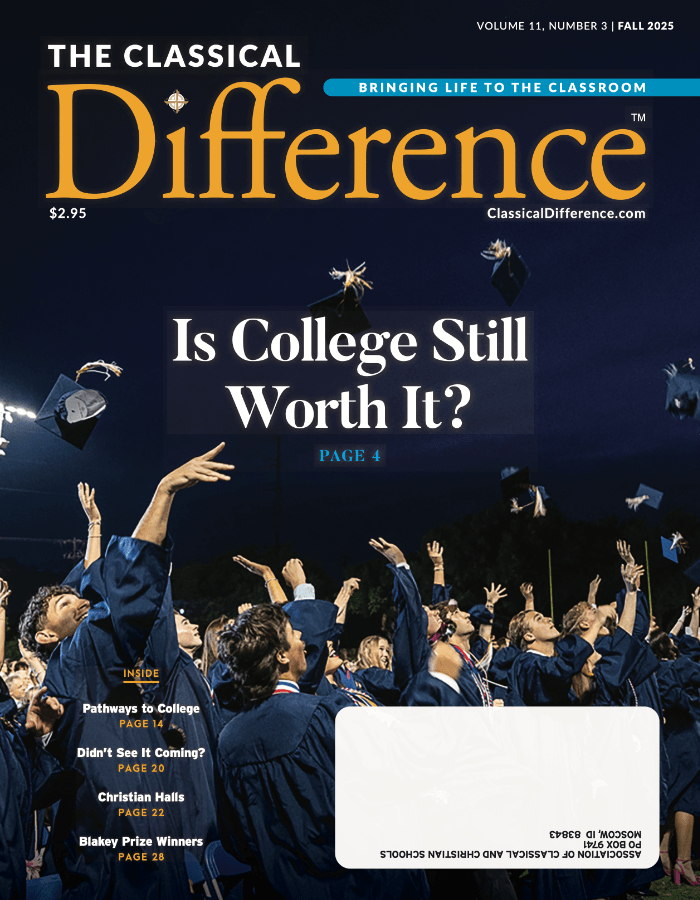







Hi Donna, the Essenes would have read the Tanakh (also known as the Miqra). It is what we know today as the Old Testament. It contained the Torah (the law), the Nevi’im (the prophets), and the Ketuvim (the wisdom writings).
Hey Jennifer, thank you for your response. I have read the Old Testament and it’s been quite a while. What I have been reading is the Essene Gospel of Peace, and in the writings I found the following passage. I’d love to know your thoughts on the inconsistency. The set is Jesus speaking to a group of men cast out of the cities because of their illnesses or other reason. It is described as a teaching that went on throughout the evening/night. “And the others answered, “We do the laws of Moses, our lawgiver, even as they were written in… Read more »
Seems to me, the Essenes were writing what would become Scripture… what Scripture would they have been reading if they were Jewish and predated the life of Jesus?